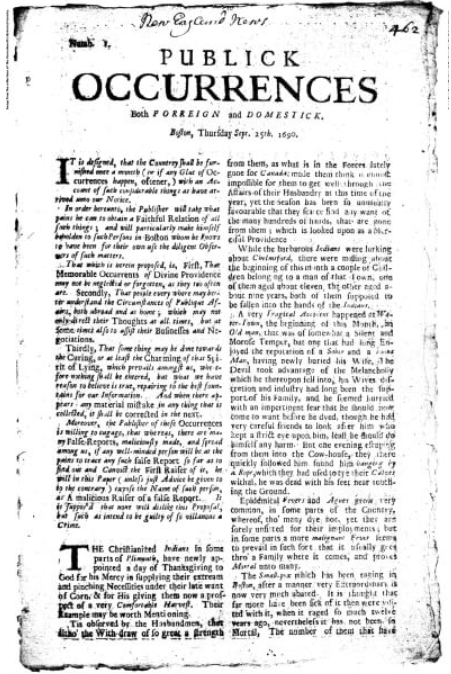Knowing these things doesn’t help you be a better digital marketer.
If you’re interested in learning interesting things for the sake of it, then focus on genuinely interesting things, like magnetohydrodynamics or black holes and white holes connected at their singularity, creating a tunnel between two patches of the Universe (a wormhole which exists only in the mathematics of general relativity and not necessarily in physical reality). These things are fascinating. Pedantic whining over a two-syllable term that has lost all essence of its true meaning is not.
But I digress – the term content has indeed lost its sense of meaning. In many cases, it has become a makeshift raft for ‘digital marketers’ and the creatively disabled to float their efforts on. A crutch for vapid minds. And so it seems necessary to give this victim of SEO abuse a helping hand back to its feet. I am going to flog the dead horse.
Where does the word come from?
Let’s start right back at the beginning. As we know it in this context, content comes from a Latin word – contenta. This then morphed with the more modern English term, contain, to develop the homonym we call content. There are then three broad definitions of this word (provided by WordNet 3.6), which I believe contribute to the understanding of content in a marketing sense:
- Content (noun) – something (a person or object or scene) selected by an artist or photographer for graphic representation.
- Content (noun) – the sum or range of what has been perceived, discovered, or learned.
- Content (noun) – what a communication that is about something is about.
Or, in my own words, it is information and stuff to help people learn more about what it is they are looking to learn about.
So, it’s information being communicated in whatever medium and fashion is best for that subject matter. Yes? Ok good.
What was content then?
Did you know content marketing could be seen as far back as 4,200 BC?! This instance was a cave painting deemed to be early listicle-style content. The cave painting had a title – ‘6 ways a spear can save you from a wild boar’ – no doubt the cave people did some cave word research before optimising it. Geniuses it was who initially discovered its tie to the dense swamp of smelly listicles currently being produced and decaying in the Internet’s vast maw of garbage today. Geniuses.
Does the above read as ambiguous in its acceptance of the subject matter? Good.
Let’s move on to some content a little closer to what we currently know it as.

Way Back
Circa 130 BC, Acta Diurna became one of the first published forms of regular news in human history – it was a Roman news form typically carved in stone or metal. Public notices, legal proceedings, marriages, births and deaths all found their way to the minds of the Roman populations through Acta Diurna. Since that time (and in some cases beforehand), public information in a newsletter or flyer format has been utilised throughout most civilizations. Tablets, bamboo scrolls, and wall paintings are all forms of communicating content.
In 1605, the first weekly published newspaper was released in Antwerp, and it was called Relation. Following that, newspapers were popping up throughout Europe, with the first English language newspaper, Corrant Out of Italy, Germany etc., being published in 1620 from Amsterdam. Then in 1690, Publick Occurrences, Both Foreign and Domestick, was released as the first newspaper in America. The Sydney Gazette and New South Wales Advertiser were Australia’s first, both starting their runs in 1803.
What was included in all of these items was relevant information about current affairs, general interest, and entertainment. Content designed for the masses. They aimed to inform and gain readership rather than build links or advertise products and services. You might be thinking that this isn’t the same as marketing content. But perhaps a modern interpretation of content as a purely commercial tactic misses the bullseye of its most powerful nature. Maybe content marketing would be much more effective if it were done without the pure intent to sell more, gain a cheap link or hit certain keywords. One has to ponder.

Closer to now
If we look a little further into the future, but still before Google, before the Internet, before ‘modern’ business itself, there was a magazine called The Furrow. It was first published and circulated in 1895 by John Deere to achieve dual goals of helping farmers become more profitable and increasing John Deere’s brand awareness. The tie between informative content and business growth is forged.
Just a few years later, in 1900, the Michelin brothers came out with the Michelin Guide – a free guide first produced for drivers, giving them tips on travel, driving, and auto repairs. This was done in an effort by the brothers to boost car sales in Paris (to increase traffic, lol). Only a few years following that, in 1904, American company Jell-O distributed free cookbooks involving recipes for their products. This endeavour reportedly saw sales increase by US$1 million per year for the following 2 years. This is where we see content have more of a direct commercial impact, and the scales of intent start tilting toward gaining a brand following over providing information. Still, though, there was no computer, so production took time, effort, and planning. There was no global online broadcasting medium to make distribution easy. And there were certainly no liberal sprinklings of keywords polluting their contents. There was a genuine art to producing these items – the writers were truly Top Guns of written expression!
These examples are widely available through online sources, so they probably aren’t that profound to you, but it seems that putting new make-up on existing information is the norm in the content marketing world these days.
Nonetheless, do you see how non-digital content has previously been? How stupid is it to refer to content marketing as a new-age phenomenon? And how if you’re a ‘content marketer’ who can log in to Adwords and BuzzSumo, create a pathetic article based on search volume and recent interest, with no opinion, substance or research, all the while standing on an invisible pedestal of business evolution’s cutting edge – you need to sit down…? It’s a technique older than a SWOT analysis, and you aren’t even very good at it. This is the perfect segue to the next point…

What is content now?
In his very interesting 2016 article titled, How Google Analytics Ruined Marketing, Tech Crunch’s Samuel Scott talks about content being a tactic as opposed to a strategy (the Oxford English Dictionary cites a set of tactics to be synonymous with a single strategy). He states that “Content is produced in the execution of strategies such as advertising, SEO and publicity…”, and gives the following as an example:
Left – Source: Tech Crunch, ‘How Google Analytics Ruined Marketing’.
But that would suggest that content (in a digital sense) is merely a tool within the SEO arsenal, used to convince search engines of a website’s right to a high rank in the SERPs. This means that the reason for the informational material ranking is SEO rather than the merits of the content as a well-researched and well-written piece in its own right. Or are the two not mutually exclusive?
What if I created a website in Australia called www.unicornhats.com. And as an expert, I filled it with incredibly in-depth, easy-to-read and informative articles, videos and infographics without doing any keyword research and no intentional SEO optimisation – purely content for content’s sake. At exactly the same time, a competitor created www.unicornhatexperts.com.au, perfectly optimised all of their SEO components and filled the pages with shallow keyword-targeting listicles that each took 15 minutes to develop. Who would:
- Rank in the SERPs?
- Be regarded by potential customers as a reliable source of anything unicorn hat-related?

What should content be?
Content should be just as much a strategy as it is a tactic. In my unicorn hat example, the content strategy supersedes any SEO strategy, as I intended to establish myself as a knowledge base and reliable brand rather than simply rank. My plan would be the same regardless of whether I had the Internet as a medium to distribute or not. So, really, content should be just that – an artful and strategic communication which is intended to inform its audience and propel the reputation of its source as an expert.
There’s no denying it. The number of regurgitated, spammy, poorly created, disgracefully written, and genuinely pathetic items of ‘content’ out there is depressing. That’s not to say there aren’t thousands of examples of outstanding content. There are; there’s no denying that, either. But it seems there is a clear correlation between content produced as a cheap tactic within an SEO or link strategy being terrible, and content produced as a well-thought-out strategy of its own being awesome. Something which Google is increasingly recognizing.
This harks back to the earlier point that perhaps if content was given a little more consideration and import than simply a tactic to push a commercial/digital agenda, it would be all the more powerful. Using tools to inspire you, keywords to understand search interest, building links to establish authority, or catchy headlines to attract glazed eyes are all things that can still be used. All I’m suggesting is a switch in the mindset when producing content. Be bothered to put yourself into the work and create things which are good on their own, not greased-up sleazy cogs in a digitally fueled capitalist machine.

The horse is officially dead
We live in a time when almost everyone has access to information, and almost everyone can produce it – and reproduce it. The historical examples I gave were successful because they were unique and had the user/reader in mind. So setting your brand, or your client’s brand, apart from the mess is a case of not just doing what’s ‘enough’, but giving respect to your content and your audience and producing items which are awesome, unique and informative in their own right.
Written by
Tahlia Reynolds





